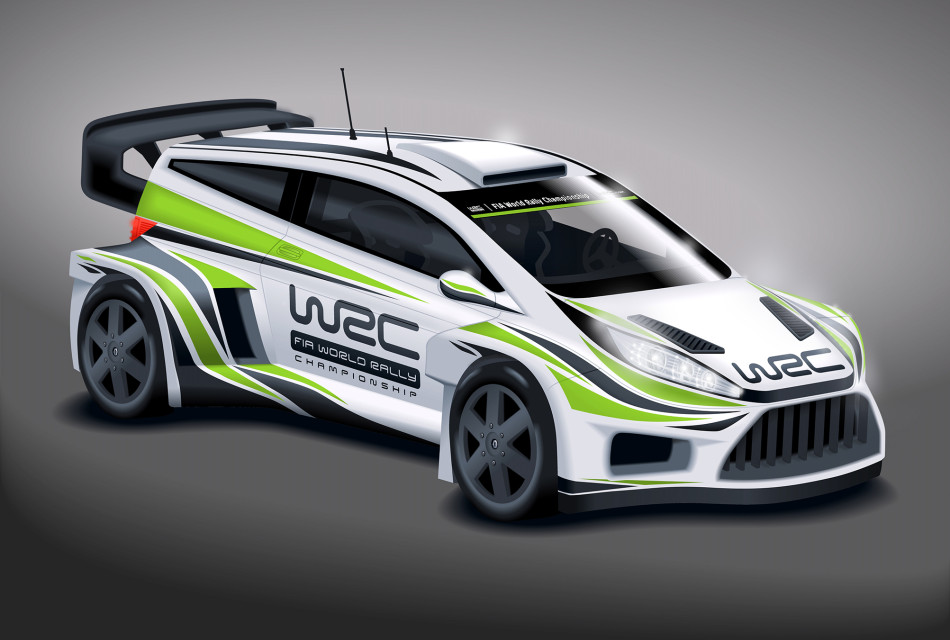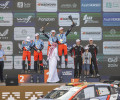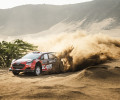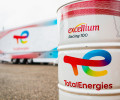New regulations coming for the 2017 World Rally Car

Dynamic, distinctive, powerful and looking potent, that’s the new World Rally Car set to bring the FIA World Rally Championship stages alight from 2017. The outline principles of the new technical and homologation regulations, approved by the World Motor Sport Council in Mexico City today, are an evolution of the current 2014-2016 regulations but will deliver more of what the fans want to see: an increase in power hidden under a more individual and dramatic body that exudes the spirit of motorsport competition.
“Defining the principles has been an extensive but very rewarding process,” said Jarmo Mahonen, FIA Rally Director. “All of the sport’s stakeholders have been involved to ensure we meet commercial, marketing and promotional objectives, while at the same time recognising what our fans want to see. The cars will look dramatic and have more character; such are the freedoms we hope to see defined in the final technical regulations. Seeing one of these cars in action will really set the heart racing and that’s exactly what was intended.”
The 2017 regulations see enhancements to the engine, and the visual impact created by an all-new aerodynamic package will dramatically enrich the spectacle of these cars and provide far greater diversity. The 1.6 litre turbo engine is retained but the power will be increased up to the level of the WTCC race cars. The diameter of the turbo restrictor will be increased from 33mm to 36mm while the turbo pressure remains at a maximum 2.5b absolute. The minimum weight of the car has also been reduced by 25 kilograms.
Greater freedom will also be afforded with the aerodynamics, setting this World Rally Car aside from many of its recent predecessors. A free zone defined around the bodyshell of the production car could see a front bumper overhang by an additional 60mm, potentially also with additional aero devices ahead of the front wheels, while the rear overhang can be increased by an extra 30mm. Bigger door sills will also be permitted. The fixed rear wing can be dramatically increased in size and while the rear diffuser will have maximum permitted dimensions, the shape will be free and may protrude up to 50mm from the rear bumper. The WRC car will be issued from a production car from which the overall homologated length must be greater than or equal to 3.9 metres, potentially adding further opportunities for manufacturers.
"I think that the ideas for the look and performance of the 2017 car are great news,” said Volkswagen Motorsport’s double FIA World Rally Champion Sébastien Ogier. “As a racing driver you are always looking for more performance. I think the larger wing and new aerodynamics will give the car a bit more downforce, more grip and more speed going into the corners. This is also good for the show, because the extra power will definitely make the driving more spectacular for the fans. And it will also make the car look a bit more aggressive with a wider body - I am really looking forward to seeing the next generation of the Polo R WRC."
The other manufacturers’ representatives currently competing in the FIA World Rally Championship were equally enthusiastic and similarly united about the prospect of exciting new regulations for 2017.
Yves Matton, Director of Citroën Racing, said: “We are very excited with the new look of the world rally car from 2017. It is difficult for us to say if we will commit to this Championship at that time, but all I can say is that the cars will look absolutely amazing. They will bear more technological aspects and lead the audience to their dream. The wings and the bumpers will be redesigned in order to attain a larger maximum width, and a larger rear wing will also bring a more aggressive look to the vehicles. We believe this will create more excitement for the public in the stages, but they will still be able to recognise the road car model they can drive on a day-to-day basis.”
Michel Nandan, Team Principal at Hyundai Motorsport: “WRC has benefited from stable regulations for the past few years, which have been good for companies like Hyundai coming into the sport. The current rules have afforded us flexibility and ease in adapting the standard road car to develop it into a WRC specification. The changes for 2017 are, however, even more ‘manufacturer appropriate’ in that we have even more freedom to work on the car, for example on the suspension, and to push the design envelope of the car, which will consequently be more powerful, larger and look more aggressive. All in all, it will be another positive step forward to improve the value of the WRC and to take the sport into an exciting new era.”
M-Sport Managing Director, Malcolm Wilson OBE: “These new regulations mark the start of an exciting new era for the FIA World Rally Championship. Not only will the 2017 cars look a lot more spectacular, but we will also see an increase in power and performance. The concept really does remind me of the Group B days. When you combine the exhilaration of that era with the fantastic safety measures that the FIA have worked to implement, this marks the start of a thrilling new chapter for the WRC. Although the cars will look completely different and there will be some substantial work on the bodyshell, a number of key components can be enhanced and carried over from our current car. From a financial point of view, a number of parts that we are currently working to develop can be taken a step further and the whole team is really looking forward to getting started on this new project.”
Toyota will also return to the WRC in 2017 with a team known as Toyota Gazoo Racing, reflecting the shared identity of the Japanese manufacturer’s other international motorsport activities. “We are excited about the challenge of coming back to the WRC. By inviting Tommi Mäkinen for our WRC project, Toyota Gazoo Racing’s development structure has been even more strengthened. Under his leadership experience, the team will proceed with car building based on 2017 regulations.”
Summarising the work collectively achieved in defining the world rally car of the future, FIA Technical Director Bernard Niclot said: “There were three main objectives with these regulations; make the car spectacular, be mindful of costs, and maintain, if not increase safety. The cars will be striking, there is no doubt about that, and there are small but always significant improvements in relation to safety. We have been attentive to the level of investment for manufacturers currently involved in the Championship and these regulations have also helped attract Toyota back to the series which is fantastic news. I think we have achieved our targets in helping to add yet more value to the WRC.”
While the new cars are set to hit the stages from 2017, WRC cars homologated between 2011 and 2016 will remain eligible in the FIA World Rally Championship but will not be updated to meet the 2017 Technical Regulations. The homologation of a 2017 World Rally Car will be completed only after a Manufacturer has registered for the 2017 Championship for Manufacturers.

 Facebook
Facebook Twitter
Twitter






